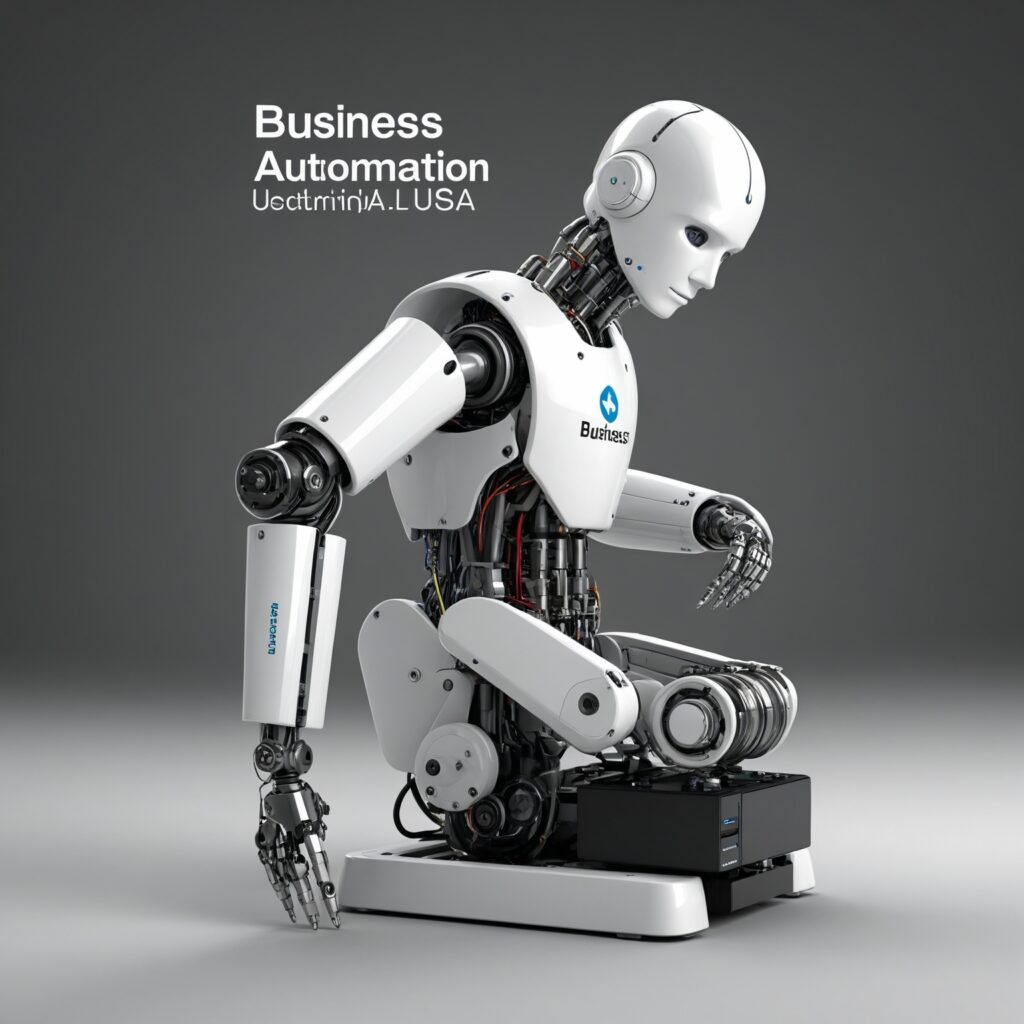Introduction
In the ever-evolving landscape of American business, automation has emerged as a game-changer. From small startups to large enterprises, companies across the United States are increasingly adopting automation technologies to streamline operations, reduce costs, and enhance productivity. This article explores the latest trends in business automation, the benefits it brings to organizations, and the challenges that businesses must navigate to successfully implement these technologies.
Understanding Business Automation
Business automation refers to the use of technology to perform repetitive tasks and processes with minimal human intervention. This encompasses a wide range of technologies, including software applications, robotic process automation (RPA), artificial intelligence (AI), and machine learning. Automation aims to improve efficiency, accuracy, and consistency in business operations.
Trends in Business Automation
- Increased Adoption of Robotic Process Automation (RPA)
RPA has gained significant traction among businesses in the USA. It involves the use of software robots or ‘bots’ to handle repetitive, rule-based tasks such as data entry, invoice processing, and customer service interactions. RPA allows companies to reduce operational costs and minimize errors associated with manual processes.
- Integration of Artificial Intelligence and Machine Learning
AI and machine learning are transforming business automation by enabling systems to learn from data and make intelligent decisions. AI-powered chatbots, for example, are improving customer service by providing instant responses and personalized support. Machine learning algorithms are also being used to analyze vast amounts of data, predict trends, and enhance decision-making processes.
- Growth of Cloud-Based Automation Solutions
Cloud computing has revolutionized the way businesses approach automation. Cloud-based solutions offer flexibility, scalability, and cost-efficiency. Companies can access automation tools and software without the need for extensive on-premises infrastructure, making it easier for businesses of all sizes to leverage advanced technologies.
- Focus on Cybersecurity and Data Privacy
As automation technologies become more prevalent, ensuring the security and privacy of sensitive information is a top priority. Businesses are investing in advanced cybersecurity measures to protect against data breaches and cyber threats. Compliance with regulations such as GDPR and CCPA is also becoming increasingly important.

Business Automation USA
Benefits of Business Automation
- Enhanced Efficiency and Productivity
Automation streamlines repetitive tasks, freeing up employees to focus on more strategic and value-added activities. By reducing manual effort and minimizing errors, businesses can achieve higher levels of productivity and operational efficiency.
- Cost Savings
Automating routine processes can lead to significant cost savings. Reduced need for manual labor, decreased error rates, and optimized resource allocation contribute to lower operational expenses. For example, automating invoice processing can lead to faster payment cycles and reduced administrative costs.
- Improved Accuracy and Consistency
Automation ensures that tasks are performed consistently and accurately. This is particularly valuable in industries where precision is critical, such as finance and healthcare. Automated systems are less prone to human error, resulting in higher quality outputs and compliance with regulatory standards.
- Enhanced Customer Experience
Automation technologies, such as AI-powered chatbots and personalized marketing campaigns, can significantly enhance the customer experience. Customers benefit from quicker responses, tailored recommendations, and more efficient service, leading to increased satisfaction and loyalty.
Challenges in Implementing Business Automation
- Initial Investment and Costs
The initial investment required for implementing automation technologies can be substantial. Businesses must consider the costs of purchasing software, upgrading infrastructure, and training employees. However, these upfront costs are often offset by long-term savings and benefits.
- Integration with Existing Systems
Integrating new automation technologies with existing systems and processes can be complex. Compatibility issues and the need for customizations can pose challenges during implementation. Businesses must carefully plan and execute integration strategies to ensure a smooth transition.
- Change Management and Employee Resistance
Introducing automation can lead to changes in job roles and responsibilities, which may be met with resistance from employees. Effective change management strategies are essential to address concerns and ensure a positive transition. Providing training and demonstrating the benefits of automation can help mitigate resistance.
- Data Security and Compliance
Automation introduces new risks related to data security and compliance. Businesses must implement robust security measures to protect sensitive information and comply with relevant regulations. Regular audits and updates to security protocols are necessary to address evolving threats.
Conclusion
Business automation is reshaping the American business landscape, offering numerous benefits such as increased efficiency, cost savings, and improved customer experiences. While the adoption of automation technologies presents challenges, careful planning and strategic implementation can help businesses overcome these obstacles and harness the full potential of automation.
As automation continues to evolve, companies that embrace these technologies will be better positioned to stay competitive and drive innovation. By understanding the latest trends, benefits, and challenges associated with business automation, organizations can make informed decisions and navigate the path to successful automation implementation.


































Leave a Reply